
Thomas Gainsborough was an English portrait and landscape painter, draughtsman, and printmaker. Along with his rival Sir Joshua Reynolds, he is considered one of the most important British artists of the second half of the 18th century. He painted quickly, and the works of his maturity are characterised by a light palette and easy strokes. Despite being a prolific portrait painter, Gainsborough gained greater satisfaction from his landscapes. He is credited as the originator of the 18th-century British landscape school. Gainsborough was a founding member of the Royal Academy.

Maria Anna Angelika Kauffmann, usually known in English as Angelica Kauffman, was a Swiss Neoclassical painter who had a successful career in London and Rome. Remembered primarily as a history painter, Kauffman was a skilled portraitist, landscape and decoration painter. She was, along with Mary Moser, one of two female painters among the founding members of the Royal Academy in London in 1768.

John Maler Collier was a British painter and writer. He painted in the Pre-Raphaelite style, and was one of the most prominent portrait painters of his generation. Both of his marriages were to daughters of Thomas Henry Huxley. He was educated at Eton College, and he studied painting in Paris with Jean-Paul Laurens and at the Munich Academy starting in 1875.

Sarah Biffin, also known as Sarah Biffen, Sarah Beffin or by her married name Mrs E. M. Wright, was an English painter born with no arms and only vestigial legs. She was born in 1784 in Somerset. Despite her disability she learned to read and write, and to paint using her mouth.
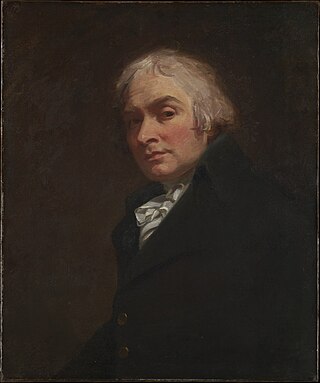
George Romney was an English portrait painter. He was the most fashionable artist of his day, painting many leading society figures – including his artistic muse, Emma Hamilton, mistress of Lord Nelson.

Sir Hubert von Herkomer was a Bavarian-born British painter, pioneering film-director, and composer. Though a very successful portrait artist, especially of men, he is mainly remembered for his earlier works that took a realistic approach to the conditions of life of the poor. Hard Times showing the distraught family of a travelling day-labourer at the side of a road, is one of his best-known works.

Levina Teerlinc was a Flemish Renaissance miniaturist who served as a painter to the English court of Henry VIII, Edward VI, Mary I and Elizabeth I. She was the most important miniaturist at the English court between Hans Holbein the Younger and Nicholas Hilliard. Her father, Simon Bening, was a renowned book illuminator and miniature painter of the Ghent-Bruges school and probably trained her as a manuscript painter. She may have worked in her father's workshop before her marriage.
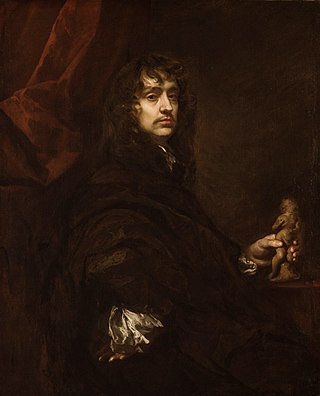
Sir Peter Lely was a painter of Dutch origin whose career was nearly all spent in England, where he became the dominant portrait painter to the court. He became a naturalised British subject and was knighted in 1679.

Marcus Gheeraerts was a Flemish artist working at the Tudor court, described as "the most important artist of quality to work in England in large-scale between Eworth and van Dyck" He was brought to England as a child by his father Marcus Gheeraerts the Elder, also a painter. He became a fashionable portraitist in the last decade of the reign of Elizabeth I under the patronage of her champion and pageant-master Sir Henry Lee. He introduced a new aesthetic in English court painting that captured the essence of a sitter through close observation. He became a favorite portraitist of James I's queen Anne of Denmark, but fell out of fashion in the late 1610s.

The artists of the Tudor court are the painters and limners engaged by the monarchs of England's Tudor dynasty and their courtiers between 1485 and 1603, from the reign of Henry VII to the death of Elizabeth I.

Catherine Howard was Queen of England from July 1540 until November 1541 as the fifth wife of King Henry VIII. She was the daughter of Lord Edmund Howard and Joyce Culpeper, a cousin to Anne Boleyn, and the niece of Thomas Howard, 3rd Duke of Norfolk. Thomas Howard was a prominent politician at Henry's court. He secured her a place in the household of Henry's fourth wife, Anne of Cleves, where Howard caught the King's interest. She married him on 28 July 1540 at Oatlands Palace in Surrey, just 19 days after the annulment of his marriage to Anne. He was 49, and it is widely accepted that she was about 17 at the time of her marriage to Henry VIII.

Gladys Maccabe, MBE HRUAFRSA MA(Hons)ROI was a Northern Irish artist, journalist and founder of The Ulster Society of Women Artists.
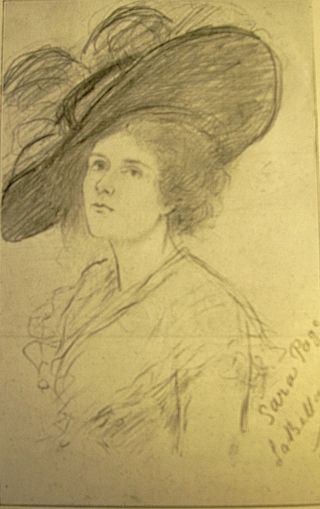
Sara Wells Page (1855–1943) was a British artist, portrait and figurative painter, of the Victorian and Edwardian period. During her lifetime she was widely exhibited at Parisian salons and British galleries, including the Royal Academy of Arts. Three of her paintings are in Wolverhampton Art Gallery.
Mary Martha Pearson was an English portrait painter.

Cecil Jay (1883–1954) was an Anglo-American painter, mainly of portraits and miniatures.

Anne Marjorie Robinson, sometimes Annie Marjorie Robinson, (1858–1924) was a British painter who also exhibited examples of her sculptures and miniatures.
Simon Jacques Rochard was a painter of portrait miniatures in France, England and Brussels in the first half of the nineteenth century.
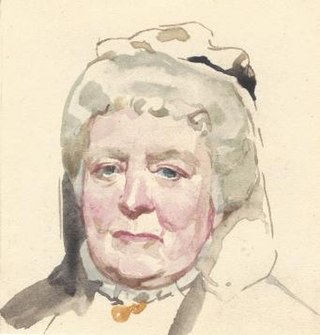
Mabel Lee Hankey was a British artist specialising in miniature portraits painted in watercolour.
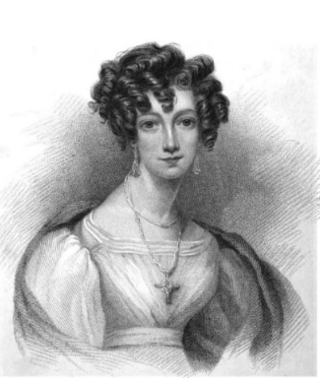
Maria Ann Chalon was a British painter of miniatures. She was Portrait Paintress to his Royal Highness, the Duke of York, and is considered one of the most talented and successful female British miniaturists of the early nineteenth century.
Elsie Maud White was a New Zealand artist who was well known for her miniature portraits. She was the first New Zealander to be elected to the Society of Miniaturists and had the first New Zealand miniature exhibited by the Royal Academy.

















